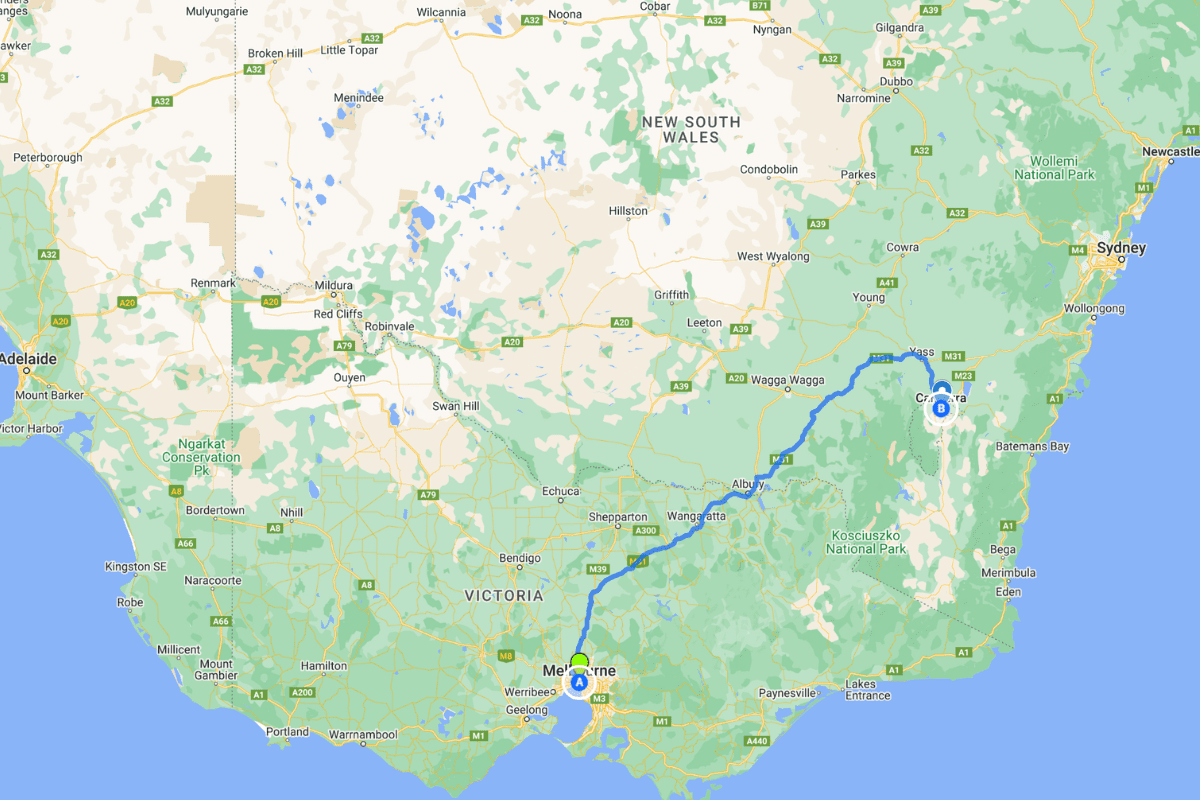Recently, my husband and I travelled to Canberra in the Australian Capital Territory (ACT) for a long weekend so I could see ‘Feared and Revered: Feminine Power through the Ages‘, an exhibition at the National Museum of Australia. But that’s not the only thing we did. Here are some highlights from our trip to Canberra. It was my first visit to the ACT and my husband hadn’t been there in 20 years.
The drive from Melbourne to Canberra
Our mini-holiday began on Thursday morning. We drove from Melbourne to Canberra, about a six-hour drive, and made a few stops along the way. Our first stop was the original Ettamogah Pub in New South Whales.
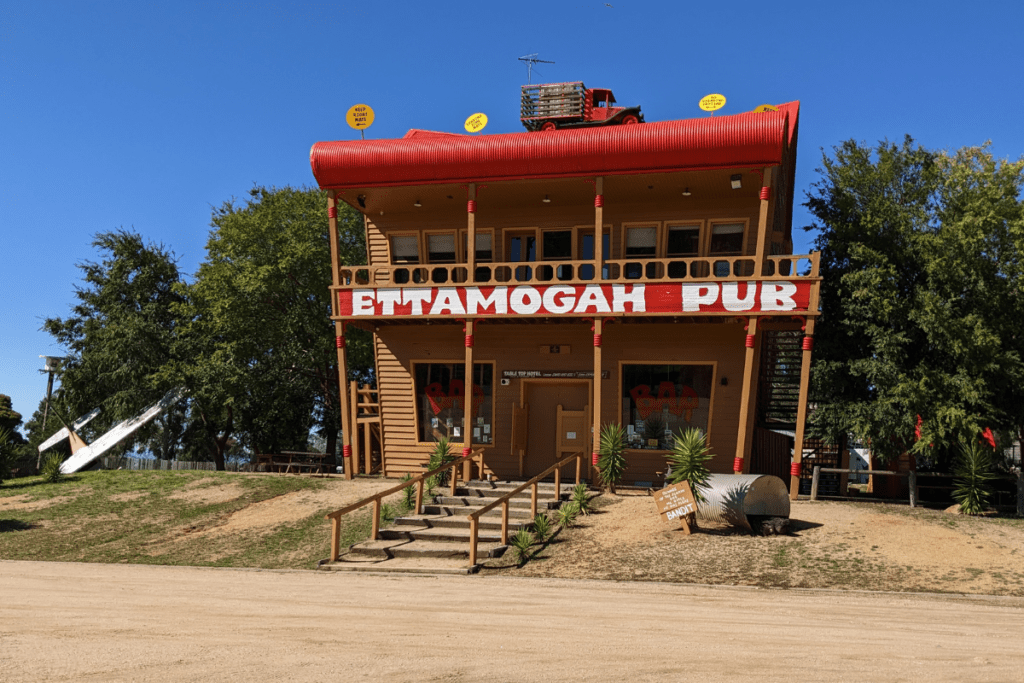
The original Ettamogah Pub was built in Albury, New South Wales, in 1987. It was designed to resemble a cartoon pub from the strip “The Ettamogah Pub” by cartoonist Ken Maynard. The pub became popular due to its unique design and friendly atmosphere, and other Ettamogah Pubs were subsequently built in Sydney, the Sunshine Coast, and the town of Cunderdin in Western Australia. The Albury site has cabins for accommodations and also houses the Ken Maynard Museum.
The pub menu has few healthy, vegetarian, or vegan options, but our greasy grub was tasty, and we enjoyed it as part of the experience. You’ll find many options at Holbrook if you want a better meal.

Holbrook is a small town located in the Riverina region of New South Wales. It’s along the Hume Highway, approximately halfway between Sydney and Melbourne, making it a popular stopover for travellers on this route.
One of the unique features of Holbrook is the decommissioned submarine, the HMAS Otway, which sits on display in the middle of the town. The submarine was gifted to the town in 1995 and has become a significant attraction.
In addition to the submarine, Holbrook is also known for its historic buildings, including the Holbrook Courthouse, which was built in 1886 and now serves as a museum, and the Holbrook Railway Station, which dates back to the early 20th century. Holbrook is also home to small shops and cafes, offering visitors a chance to grab a bite to eat or shop. Holbrook is charming and a great place to stop on a long road trip.

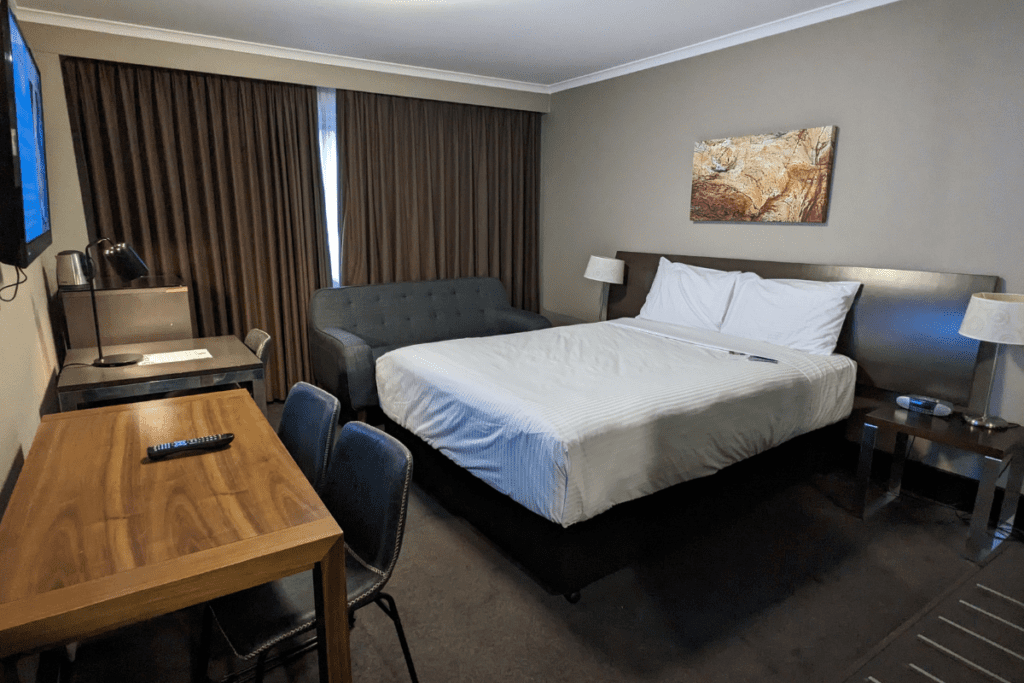
After a power nap under a big, shady tree in Holbrook, we drove to Canberra. We stayed at the Pavilion on Northbound Hotel, which has a beautiful atrium, a decent buffet breakfast, and a surprisingly good bar and restaurant. Checking in was a breeze, and the hotel staff was outstanding. Our room was adequate though a little cramped, and the bathroom lacked a fan. We also found the bed too soft and didn’t sleep well.
That night, we went to the Durham Castle Arms to meet an acquaintance for dinner and watch her perform in the pub’s open mic night. That was fun. It’s interesting to see comedians testing and refining their material and seeing how they work the audience when a joke doesn’t quite land.
The National Museum of Australia
The following day, we went to the National Museum of Australia. We spent an hour or two at the ‘Fear and Revered‘ exhibition and then explored the rest of the museum.
The National Museum of Australia showcases the diverse history and culture of Australia with a focus on Indigenous histories, European settlement, and interaction with the land. We spent a few hours exploring the museum and enjoyed it very much.


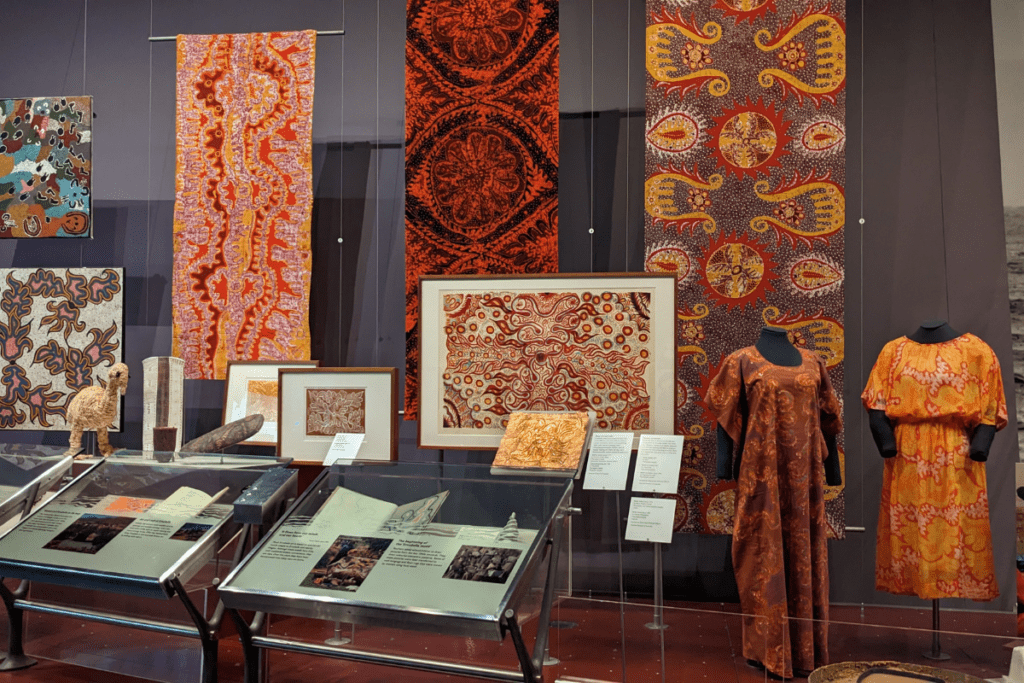
Going to the National Museum of Australia was the only fixed attraction on our itinerary. So, after a relaxed late lunch at Grease Monkey, we set out to find the Big Powerful Owl, an 8-metre-tall piece of public art by our friend Bruce Armstrong. It’s at a busy intersection and one of those iconic big Australian things Aussies love (or love to hate).
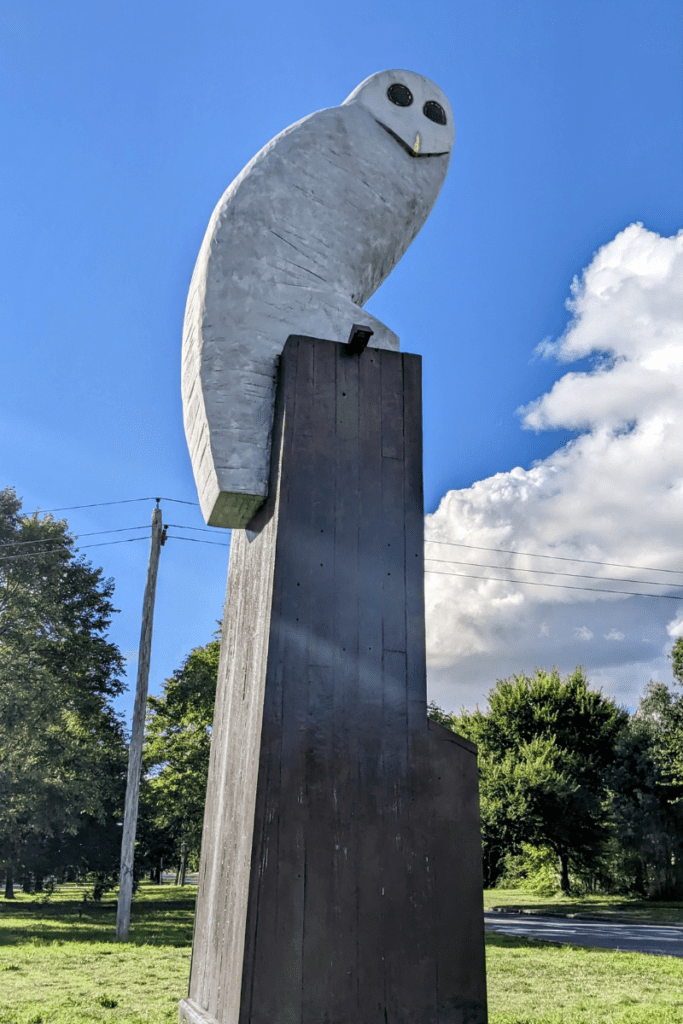
After seeing the Big Powerful Owl, I directed my husband to Fyshwick because every ‘things to do in the ACT’ list includes a visit there and paints the area colourfully as “the topic of hushed conversations” and an “eclectic destination that houses more than a few surprises”. They promise artisan bakeries, designer op shops, niche markets, and breweries. My tradie husband laughed as I led him past a Middy’s, an electrical wholesaler, and noted that we drove 20 minutes on the highway to an industrial suburb.
Fyshwick
Fyshwick isn’t known just for its motor vehicle dealers and hardware stores; it’s also one of two places in the ACT where strip clubs and brothels operate legally and where, up until 2009, you could buy fireworks. Before all that, when Fyshwick was a vast area of unused land, it was also the site of an internment camp.
Completed in 1918, the Monlonglo Internment Camp was intended to house 3,500 German and Austrian nationals being expelled from China, but diplomatic interventions prevented that. Instead, the camp housed 150 internees transferred from two other camps in New South Wales. During the First World War, the Australian Government interned 7,000 people in the interest of national security. These were primarily German men, women, and children deemed “enemy aliens” despite many being naturalised British subjects or Australian-born descendants of migrants. The Monlonglo Internment Camp at Fyshwick closed in late 1919 after the internees were deported to Germany.
You wouldn’t know that by visiting Fyshwick today. It looks like any other retail and industrial suburb. If you know exactly where to look, you will find surprises, such as the Harry Potter shop Quizzic Alley and Dirty Janes vintage market.
That evening, we had dinner at our hotel. I mention this only to brag about how delicious my porcini mushroom ravioli was as well as the Basque burnt cheesecake we shared. The following day, we went to Parliament House.
Parliament House
Parliament House is the seat of the legislative branch of the Australian Government. The building was officially opened on 9 May 1988 by Queen Elizabeth II. I was excited about visiting the nation’s capital. Is that very American of me?
The design of the Parliament House is unique, based on the shape of two boomerangs and topped with a flagpole towering 81 meters above the ground and a large central courtyard known as the Great Hall. The building was designed to blend in with the surrounding landscape, and it is situated on a hill, which offers views of the city and its surroundings.
The building has over 4,700 rooms, including offices for Members of Parliament and their staff, committee rooms, libraries, and meeting rooms. The Great Hall is also home to one of the largest tapestries in the world, measuring over 20 meters wide and 9 meters high. Parliament House also has 2,700 clocks; you can’t help but notice their tick-tock-tick-tock-tick-tock. There’s also Shawn the Prawn, a fossil preserved for 345 million years in the black limestone of the marble foyer floor.

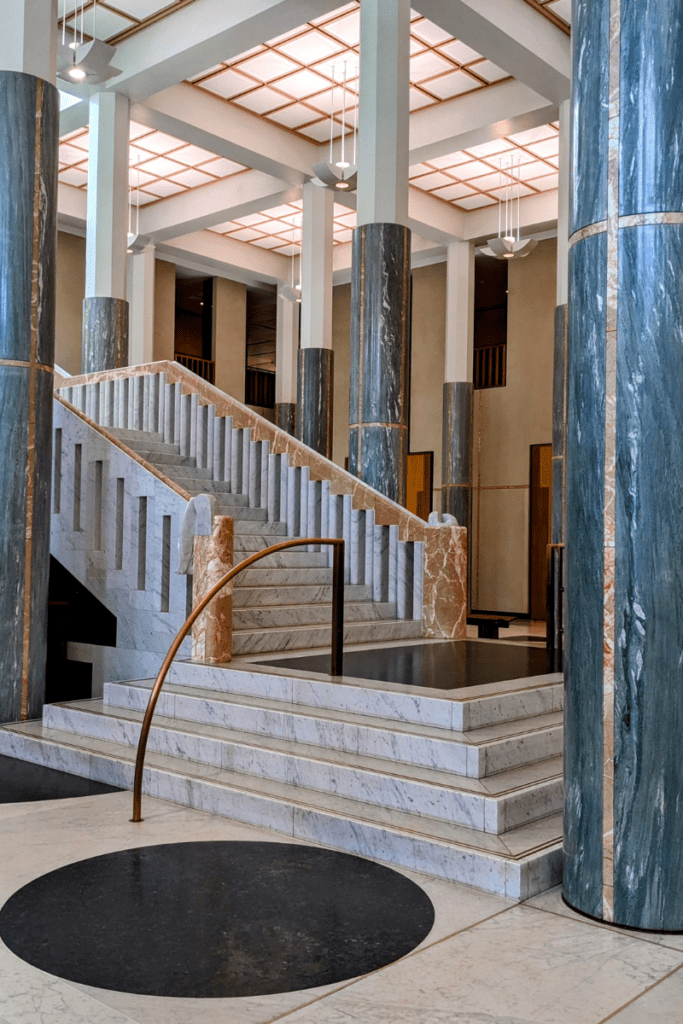

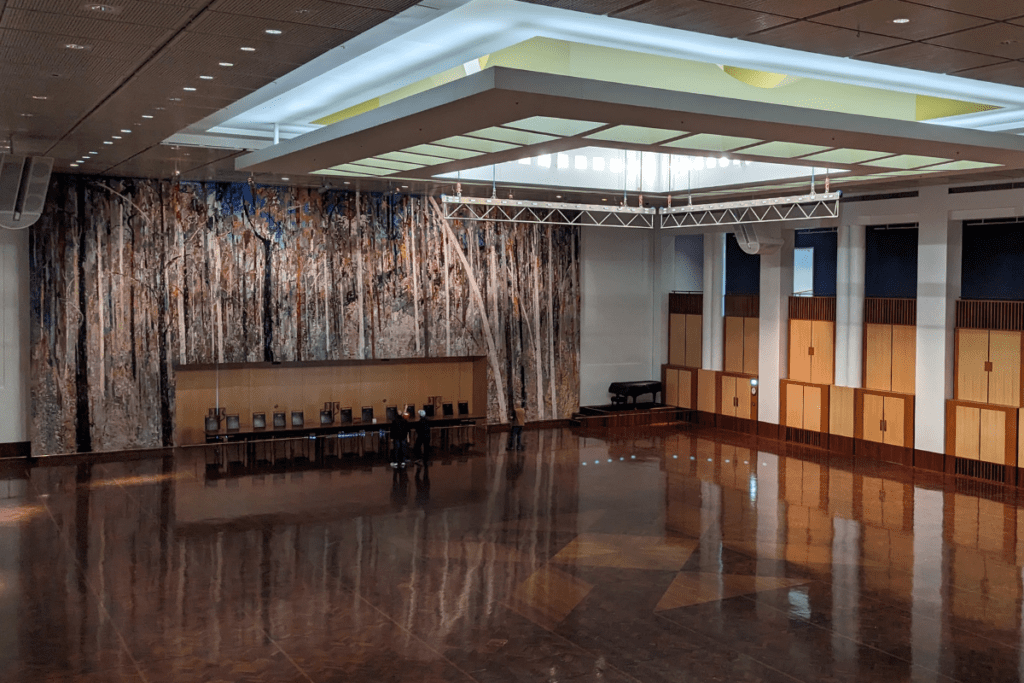
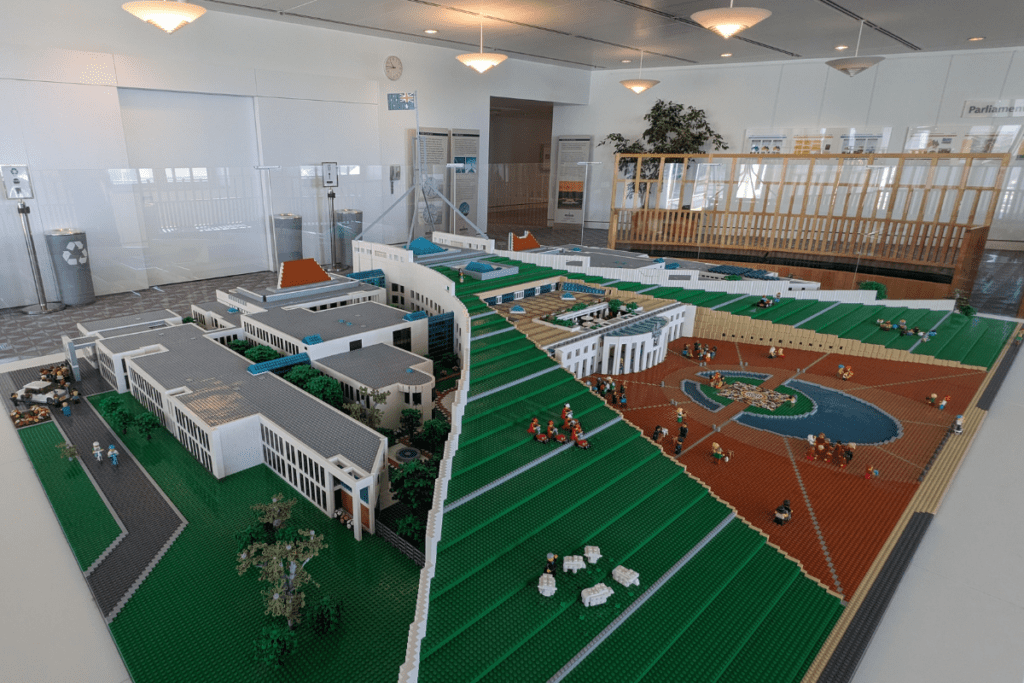
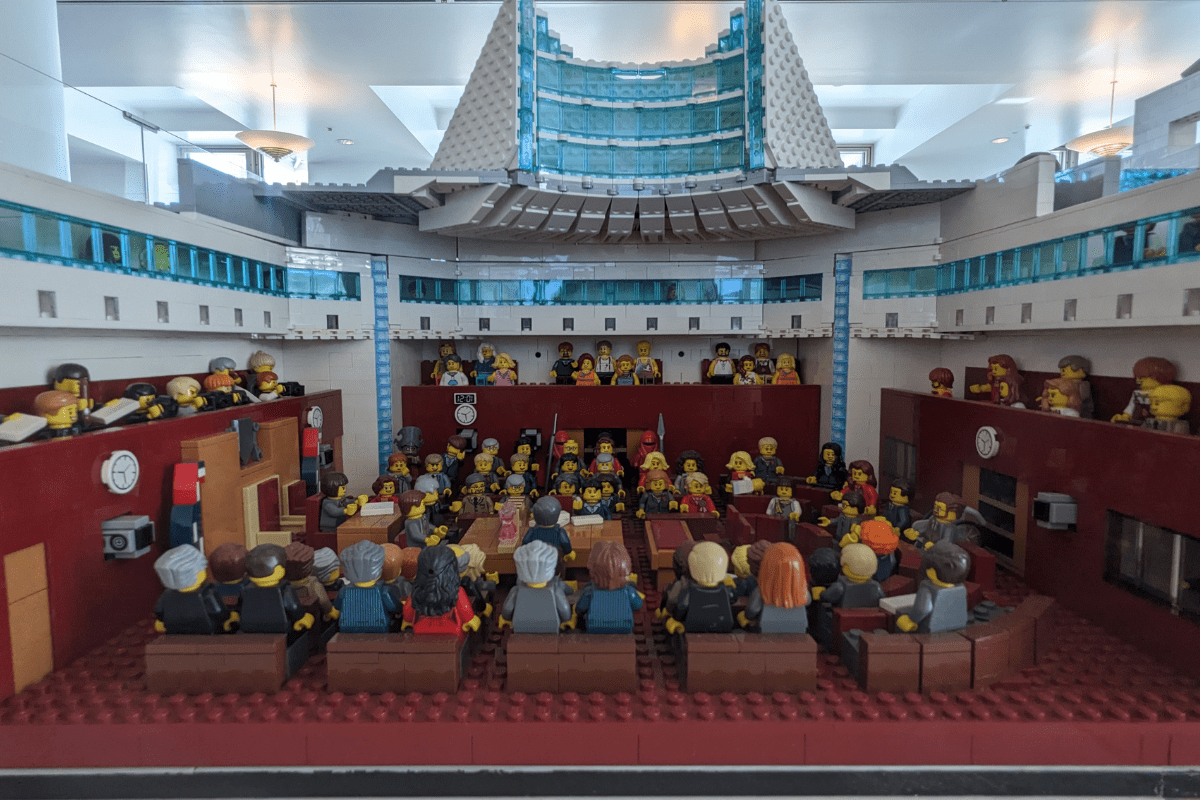



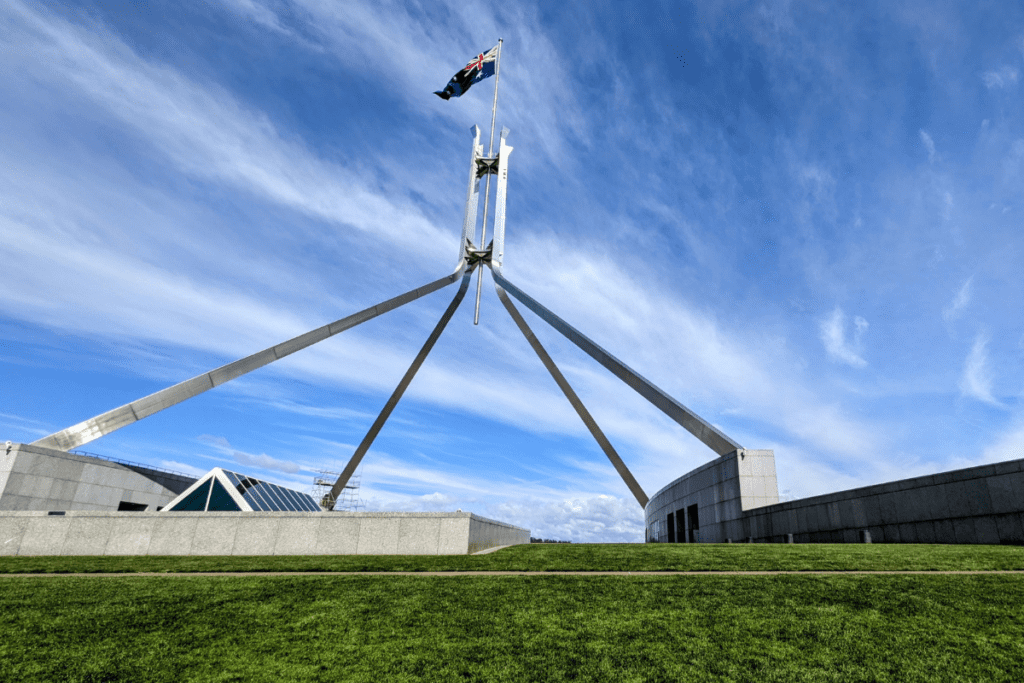

We enjoyed our visit to Parliament House but couldn’t help but notice little acknowledgement of Australia’s Indigenous people, histories, or culture. For example, the Ngunnawal, Ngunawal and Ngambri peoples have lived in the country that is now Canberra for more than 20,000 years, and Capital Hill is known to the Ngambri people as Kurrajong Hill, a women’s mountain. You won’t learn anything about this at Parliament House. There is little about the history and contributions of women or immigrants, and it’s all very, well, English-ish.
Parliament House shows little diversity or progress. This may be very American of me too, but I hope to see another flag one day waving on that tall flagpole, an Aboriginal flag or a flag that represents a new, independent Australia that truly captures all the colours of this country.
After Parliament House, we got some lunch and popped into the Crystal Chalice, Canberra’s only Pagan shop, which is excellent. We packed and napped at our hotel before going out for our last night in town. We had dinner at Marble & Grain, an excellent steakhouse. The following day, we had breakfast and said goodbye to Canberra. We made one stop on our way home to visit the Dog on the Tuckerbox.
Dog on the Tuckerbox
The Dog on the Tuckerbox is an Australian icon and a popular tourist attraction in Gundagai, New South Wales. The statue depicts a loyal dog sitting on a tuckerbox, a box used to store food while travelling.
The story dates back to the pioneers of the early 1800s when bullock teams serviced the local area, and their dogs sat and guarded their tuckerboxes and possessions. The legend has been the subject of numerous poems, songs, and stories, symbolising Australian loyalty and perseverance.
The Dog on the Tuckerbox statue was erected in 1932, and the monument was “dedicated to the pioneers and bullockys, who made the highway of to-day posible” [sic]. A souvenir shop is nearby selling Beechworth Honey and other local products.

Overall, we had a good time on our mini-holiday in Canberra. Parliament was not in session, and it was school holidays, so the city was quiet (or quieter, I’m not sure). As it goes with holidays, by Sunday night, we were glad to be home and sleeping in our bed.
Be sure to follow me on Instagram for more photos from our trip.

